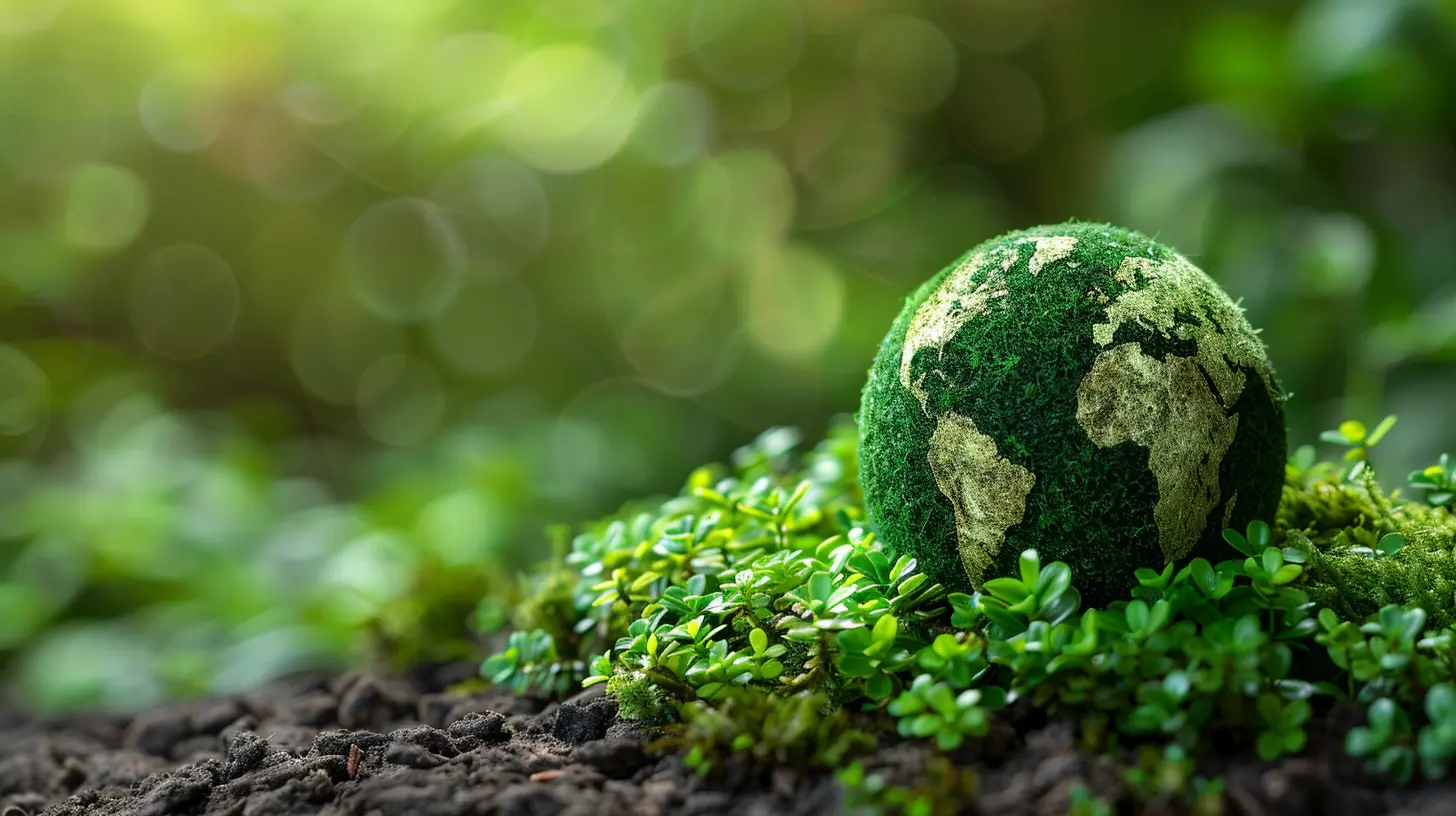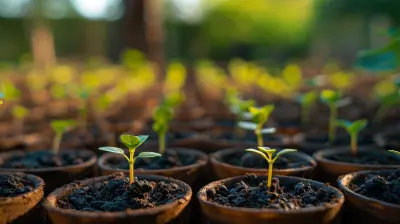Sustainable Supply Chain Strategies for a Greener Future
19 July 2025
Let’s face it: our planet isn’t getting any healthier on its own. Every business, big or small, plays a part in either depleting or preserving Earth’s resources. And if you’re in the business world, you’ve probably heard the buzzwords "sustainability", "eco-friendly", and "carbon footprint" thrown around like confetti. But what does this all mean for your supply chain?
Well, here's the good news — shifting toward a sustainable supply chain isn't just good for the environment, it's also great for your brand, wallet, and long-term survival. Let’s talk about how you can create a supply chain that doesn’t just move products, but also moves us closer to a greener future.

Why Sustainability in the Supply Chain Matters
Think of your supply chain like a long relay race. Every step — from raw material sourcing to manufacturing, transportation, and even packaging — passes the baton along until your product reaches the end customer.Now imagine if some runners in that relay are slow, wasteful, or careless. That affects the whole race, right?
It's the same with your supply chain: if one link is environmentally irresponsible, that carelessness trickles across your brand and operations. A sustainable supply chain ensures that every part of this journey respects the planet, the people involved, and future generations.
The Pressure is On (In a Good Way)
Let’s not ignore the elephant in the room — consumers. Folks today aren’t just buying products. They’re buying stories, values, and transparency. Brands that shout green but operate dirty? They're getting called out, fast. Plus, regulatory bodies are tightening the screws, demanding companies meet emission and ethical standards. So, if you’re not already thinking sustainability, you’re already falling behind.
What Makes a Supply Chain "Sustainable"?
Great question. A sustainable supply chain focuses on three core pillars:1. Environmental Responsibility: Reducing emissions, waste, and reliance on non-renewable resources.
2. Social Responsibility: Ensuring fair labor practices, safe work environments, and community impact.
3. Economic Viability: Balancing cost-efficiency and scalability without sacrificing ethics or environmental health.
It’s about doing the right thing in a way that still makes business sense.
Key Strategies for Building a Greener Supply Chain
Now let’s look under the hood. These are real-world, actionable strategies to green your supply chain without going bankrupt doing it.1. Source Responsibly
Where your materials come from sets the tone. Are they renewable? Are they ethically sourced? Do your suppliers practice what you preach?You might consider:
- Partnering with local suppliers to cut down on transport emissions.
- Vetting partners for ethical labor practices and eco-certifications.
- Using recycled or upcycled materials where possible.
Think of it as auditing the DNA of your products. If it starts green, it’s easier for the rest to follow suit.
2. Use Clean Energy in Production
Manufacturing can be a dirty business. But it doesn’t have to be. Shifting toward clean, renewable energy sources not only reduces emissions but often cuts costs over time.Solar panels on factory roofs, energy-efficient machinery, and using off-peak hours for high-energy tasks might seem small, but they add up like compound interest.
3. Streamline Transportation & Logistics
Shipping is a massive carbon contributor in the supply chain puzzle. But smarter logistics can help:- Optimize delivery routes using technology.
- Consolidate shipments to reduce trips.
- Electrify your fleet or partner with carriers using EVs or biodiesel.
Even something as simple as switching to lightweight, sustainable packaging reduces fuel usage. It’s all about shaving the waste — literally and figuratively.
4. Embrace the Circular Economy
Traditionally, supply chains are linear. Raw materials go in, products come out, and they eventually get tossed.The circular economy flips the script. It’s about designing products and processes that allow reuse, recycling, or regeneration.
Encourage customers to return used products, repair rather than replace, or offer incentives for recycling. When a product lives multiple lives, so does your impact — in a good way.
5. Digitize & Increase Transparency
Technology can help you keep an eagle eye on your supply chain. Digital tools like blockchain, AI, and real-time analytics help monitor environmental impact, detect inefficiencies, and ensure suppliers stick to the standards you’ve set.Plus, transparency builds trust. Share your progress — even your struggles — with customers. People respect honesty and effort more than polished perfection.
6. Train and Empower Your Team
Sustainability starts with mindset. Your employees are your change agents. Get them onboard by:- Offering sustainability training.
- Involving them in green initiatives.
- Encouraging bottom-up innovation — like rewarding eco-friendly ideas.
Culture change doesn’t happen overnight, but the ripple effect can be powerful once set in motion.
7. Focus on Waste Reduction
The less waste you produce, the less you spend and the less you pollute. It’s a win-win-win. Go after:- Raw material scraps.
- Excess packaging.
- Overproduction and unsold inventory.
Remember, waste is just a resource in the wrong place. Rethink it, repurpose it, or eliminate it.
Real-Life Brands Doing It Right
Let’s not keep this theoretical. Here are a few companies walking the green talk:Patagonia
They’ve been using recycled materials long before it was trendy. Their supply chain reflects their values — transparent, ethical, and circular.Unilever
They’ve pledged to halve the environmental impact of their products. From sustainable palm oil sourcing to eco-friendly packaging, their supply chain is constantly evolving.IKEA
They're investing millions in renewable energy, aiming to use only renewable or recycled materials by 2030.So yeah, it’s not just possible — it’s profitable and powerful.
Challenges (And How to Overcome Them)
Alright, let’s be real. Going green isn’t always easy. It comes with a few speed bumps:Higher Upfront Costs
Yes, sustainable materials or tech might cost more initially. But the long-term savings in energy, compliance, and brand loyalty usually outweigh the price tag.Supplier Resistance
Not every partner will be on board at first. Be patient. Offer guidance, support, and incentives. Or, if needed, find partners who share your vision.Complexity & Data Overload
Sustainability metrics can be overwhelming. Focus on a few key indicators first — like carbon footprint, waste generation, and water usage — and build from there.How to Get Started Today
You don’t need to overhaul your entire operation overnight. Just get moving.Here’s a quick roadmap to start:
1. Do a Supply Chain Audit – Identify your biggest environmental impacts.
2. Set Clear Goals – Maybe reduce emissions by 10% in a year. Keep it measurable.
3. Choose Slow & Steady Improvements – Tweak transportation, revisit packaging, talk to your suppliers.
4. Measure & Share – Track your progress and let your customers know.
Progress over perfection, folks.
The Benefits of a Sustainable Supply Chain
Still not convinced? Here's what you stand to gain:- Customer Loyalty: People vote with their wallets. Sustainability sells.
- Cost Savings: Efficiency reduces waste and expenses.
- Risk Reduction: You dodge future regulations, fines, and PR disasters.
- Investor Attraction: Green businesses attract more socially responsible funding.
- Talent Magnet: Employees, especially younger generations, want purpose-driven employers.
Final Thoughts
Creating a sustainable supply chain isn’t a trend. It’s the new normal. Business as usual? That’s yesterday’s news. The companies that thrive tomorrow are the ones taking action today, even if they start small.So, here’s your challenge — take that first step. Talk to your team. Look at your current suppliers. Pick one area to green up. Sustainability isn’t about achieving utopia overnight. It’s about being a little better today than you were yesterday, and a lot better a year from now.
Because let’s be honest — a greener supply chain isn’t just about saving the planet. It’s about saving your business from becoming irrelevant.
all images in this post were generated using AI tools
Category:
Supply Chain ManagementAuthor:

Caden Robinson
Discussion
rate this article
1 comments
Astra McElhinney
Who knew saving the planet could be this fun? 🌍💚 Let's turn those supply chains into green machines! With a sprinkle of innovation and a dash of teamwork, we can all be eco-heroes. Onward to a greener future!
August 1, 2025 at 4:31 AM

Caden Robinson
Absolutely! Together, we can transform supply chains into sustainable powerhouses. Every effort counts in our mission for a greener future! 🌱


